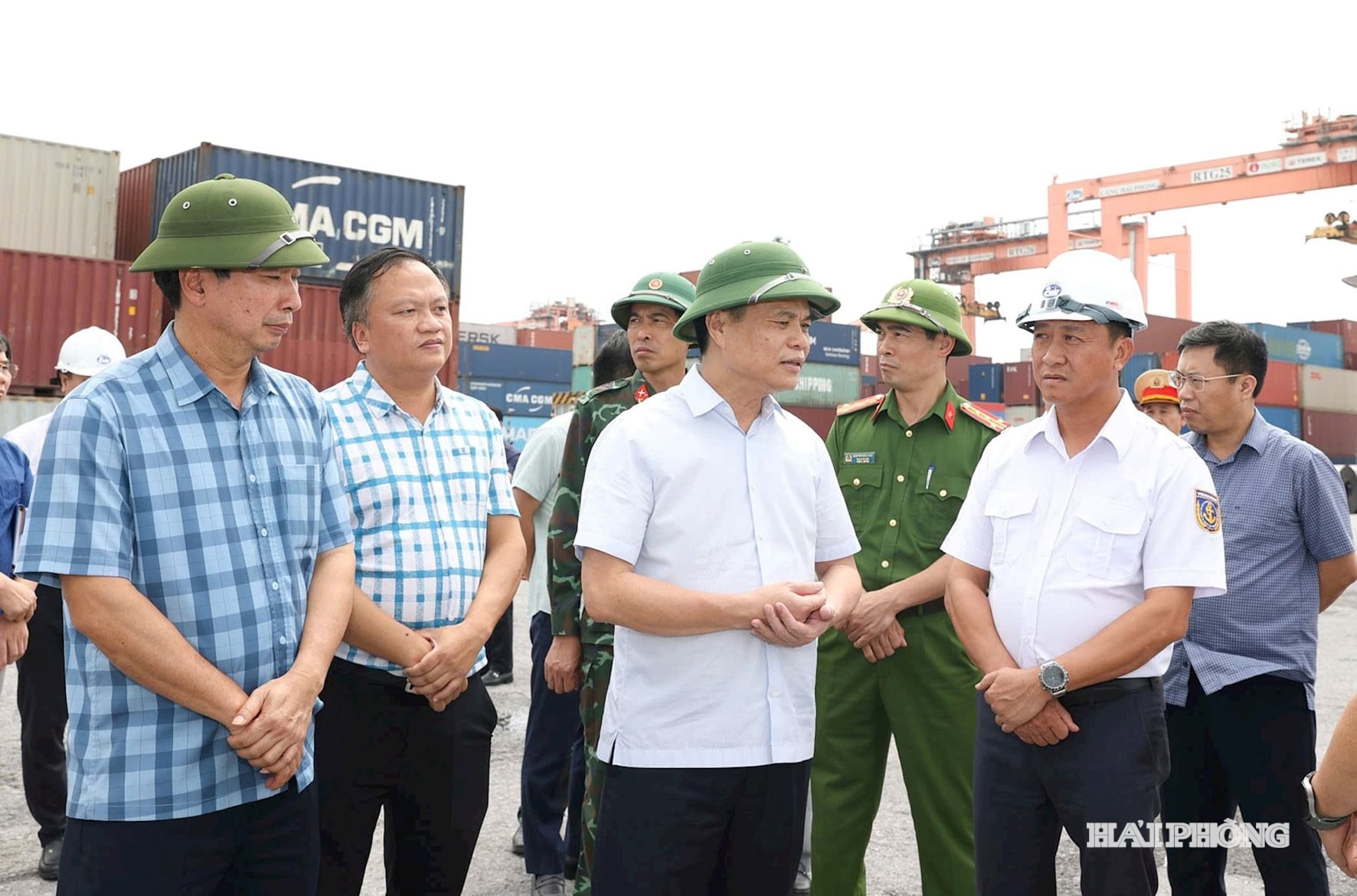The Chairman of the Hai Phong People’s Committee has requested chairpersons of commune, ward, and special zone People’s Committees, along with heads of city departments and agencies, to take proactive measures against Typhoon Matmo at the highest level, anticipate the worst-case scenarios, and ensure the safety of local residents.

The Chairman of the Hai Phong People’s Committee has emphasized that officials at all levels must not be negligent or subjective in their response to Typhoon Matmo, the 11th to hit Vietnam this year.
Accordingly, authorities must constantly update and closely monitor the typhoon’s developments; take strong leadership and direction; review and update response plans; and be ready to immediately take decisive measures from the earliest stage. Proactive preparedness at the highest level is required to ensure people’s safety and minimize property damage to both residents and the State, avoiding any passivity or surprise in all situations.
Communication and public awareness efforts should be strengthened to encourage residents and businesses to take preventive actions against the storm, heavy rain, and floods, and to protect lives and property. Special attention must be paid to thunderstorms, whirlwinds, and lightning that may occur before and after the storm makes landfall.
Local authorities are instructed to make timely decisions on the evacuation of residents from high-risk areas, especially coastal zones, areas prone to landslides, flash floods, deep inundation, and those with weak or dilapidated housing, to safe shelters. They must prepare plans to provide temporary accommodation, food, and essential supplies to evacuated residents, ensuring stability and well-being in evacuation sites.
Measures must also be taken to protect houses, warehouses, public offices, industrial parks, factories, power and telecommunication systems. Authorities are to inspect and reinforce dikes, reservoirs, and irrigation works, particularly at critical points, to promptly handle any incidents from the earliest stage.
Attention should also be given to ongoing construction sites, especially high-rise buildings, wharves, ports, logistics service areas, shipbuilding and repair facilities, transportation and public works, power transmission systems, communication lines, mining areas, aquaculture zones, farms, and production activities along riverbanks.
Forces must be ready to monitor and control people and vehicles in flooded areas, fast-flowing streams, and landslide-prone zones, and strictly prohibit crossings where safety cannot be guaranteed. All efforts must be made to prevent avoidable loss of life due to negligence or carelessness. Equipment, materials, and personnel must be prepared to promptly address incidents and ensure smooth traffic flow on major routes during heavy rainfall.
Storm preparedness measures should be implemented as early as possible across seas, islands, coastal areas, and inland. Special attention must be paid to reinforcing homes, infrastructure, and sea dikes, and minimizing damage to production activities, particularly coastal agriculture. Safety plans should also be in place for tourists on islands and in coastal zones, ensuring proper accommodation and support for those stranded by the storm.
Authorities in western Hai Phong are to closely monitor flood levels on rivers such as Kinh Mon, Kinh Thay, Thai Binh, and Gua. Strict patrol and dike protection duties must be observed according to flood alert levels, ensuring timely detection and response to any incidents. Relocation of residents living outside the dikes in flood-prone areas must be carried out promptly to ensure absolute safety. Aquaculture cages on rivers must be securely moored, and people working on these cages must be moved to safe places. Residents should also be guided to harvest aquatic products early to minimize losses…
Hai Phong News